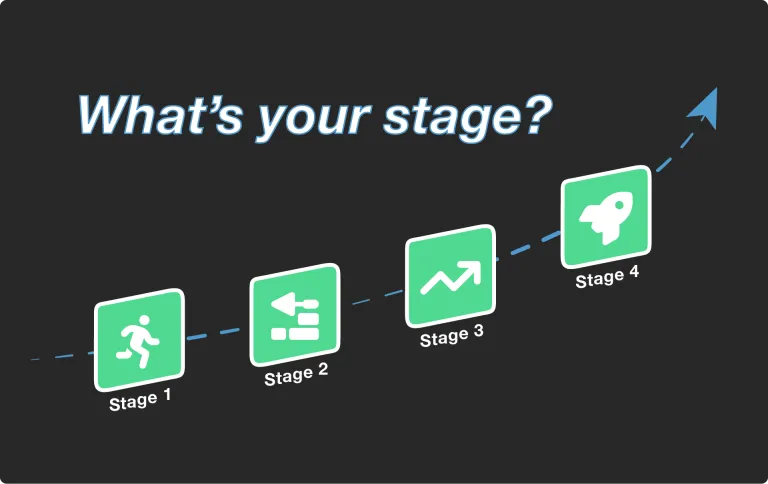This is going to sound crazy. If you want to grow your small business, then you should stop competing. Well, sort of. Specifically, you should stop competing on price.
There’s a dangerous game small businesses are often tempted to play. It’s called the “race to the bottom”, and unless you really want to operate your business on razor-thin margins you must avoid playing.
It’s a zero-sum game, where the only winner is maybe the consumer, and even then, only sort of. The customer may end up getting a better price, but they almost certainly do not get a better product or service at the end. Any business participating in the race to the bottom inevitably has to cut corners just to keep the lights on. So ultimately, even the customer ends up losing when they get an inferior product or service.
The only way for you to win this game is to not play it. Don’t commoditize yourself!
Are you playing the price game?
Fortunately, it’s not very difficult to determine whether or not you’re in a race to the bottom.
- Is your market saturated with competitors who offer basically the same product or service?
- Do you find that most of your customers or deals are won or lost on the basis of price?
- Have you ever participated in a “price war” with a competitor?
If you answered “yes” to any of the questions above, then it’s likely that you’ve either been tempted to compete on price or that you already are.
Now, I’ll admit that there are some industries where not playing the price game is going to be more difficult. Difficult, but not impossible. What’s that? You want some examples? Ok, here you go:
- Groceries. Can you think of a more commoditized industry than groceries? In most cases, there is little-to-no difference between the quality of many of the products you can buy in any given grocery store. And the store down the street likely sells the exact same product, or something very similar to it. But have you noticed that there are certain grocery stores that are far more expensive than others? Locally owned grocery stores simply cannot beat Walmart’s prices, but they don’t have to. Not if they refuse to play the game.
- Any of the trades. Let’s pick electricians, but we could go with just about any “blue collar” trade. The chances are pretty good that there are several, if not dozens, of electricians in your area. If you were to call all of those electricians to get bids for a job, you’d get a really wide range of quotes. And a pretty high density of the bids you’d get would be on the mid-lower end of the range. But you’ll also see a couple of significantly higher bids toward the mid-top end of the range. How are those guys staying in business?
If you’re competing on price right now, you don’t have to! Seriously! Stop playing the game.
Yes. You will probably lose some prospects and customers.
And that’s okay. Actually, that’s probably a really good thing!
I want you to stop and think for a moment. Think of some of the most price-sensitive customers you’ve worked with in the past year.
- Were they easy to please?
- Were they enjoyable to work with?
- Was the money you made worth the price you paid?
I’m guessing that in many cases, the answer to those questions is “no”.
So, what are you supposed to do with those folks if you stop competing on price? Here’s a crazy new strategy to try: give them your competitor’s phone number. I’m serious. Give your most price-sensitive prospects and customers your competitor’s phone number.
Sounds crazy, right?! Well, maybe not. This could just be your new competitive advantage.
By sending your most price-sensitive prospects to your competitors, you accomplish at least two things:
- You’re forcing your competitor to decide whether or not to race to the bottom. Many of them will not turn down a job, which forces them to operate on thinner margins
- You let your competitors deal with the more price-sensitive and often more difficult customers
In case that sounds mean-spirited: it isn’t. It’s your job to run your business, not your competitor’s business. It’s their job to decide which customers they work with and how much to charge.
Compete on this instead
If you don’t compete on price, then you’ll need to differentiate yourself in the market some other way, right?
Next week we’ll go into this particular topic in much greater detail. For now, though, there are basically two other broad categories you should consider when differentiating your business in the marketplace: product and service.
To compete on product, you can either figure out new ways of packaging a product or you can deliver a significantly higher quality product. If you’re in a highly commoditized space, you will have to at least compete with high quality - it’s difficult to imagine repackaging the work an electrician needs to do…
If you’re in retail, however, you may be able to look at a combination of both quality and an enhanced product. For example: if you run a local hardware store, you may sell the exact same barbecues that your customers could also buy on Amazon, but you might offer free delivery and assembly. And you might charge more for that convenience.
In my opinion, differentiating on service is where small businesses have the biggest advantage. If you do the following, you’ll quite likely already have an advantage over many of your competitors:
- Provide amazing and courteous customer service.
- Do what you say you’re going to.
- Be on time or early.
- Communicate clearly and proactively.
- Teach your crews/techs/team members to behave like owners.
Basic stuff, right? So basic, that we’d like to think that everyone is doing all of those things. Wrong! Do these fundamental things and you’ll already be out ahead of a lot of your competitors.
Show me the money!
In every issue, I try to write about things that could save you time or make you money. I think this issue could do both.
If you decide not to race to the bottom, if you compete on something other than price, then the following things are likely to happen:
- You’ll have wider margins, which should also mean:
- you’ll have more time to focus on quality and service.
- your revenues should increase.
- you may not have to take as many customers to meet your goals.
- You won’t be wasting time with difficult customers (but your competitors might be if you refer them).
- Your word-of-mouth marketing will likely increase dramatically in direct correlation to your quality and service differentiators.
- You’ll position yourself for new products and services in a premium segment of your market - all of those happy customers who cared about more than price are very likely to buy from you again.
Do it in the right order
If you’re going to get out of the race to the bottom, you’ll have to do this in the right order.
First, you’ve got to earn it. If you aren’t providing the best service and product, then you have to start here. Earn the right to charge more by operating with excellence. I’m pretty confident that you’re already doing this, though.
Next, you should do a bit of research to better understand the competitive landscape. Once you understand the range of pricing for your product and service in the market you typically serve, you can begin to experiment with where you’d like to fall in that range. I’d recommend aiming to be in the top 30-40% of the range, unless you’re aiming for the absolutely premium portion of the market, in which case you may want to land in the top 10%.
Last, you’ll make a plan for rolling out your new pricing. Making changes will be largely specific to your industry, but here are a few general guidelines.
- Avoid sticker shock for your existing customers by proactively communicating about upcoming pricing changes. Most people understand and even expect prices to adjust every so often. And for those who don’t… well, you might just give them a competitor’s phone number.
- Update your pricing for new customers right away.
- Commit to regularly (at least annually) revisiting your pricing and increase it as appropriate. Inflation doesn’t seem to take a nap, so neither can your pricing if you’re going to stay in business.
A safe way to get started is to commit to stepping up your pricing over the course of a couple of years while simultaneously working really hard to ensure that your business is providing a stellar product and service.
As with most things in business, you’re probably not going to get this perfect the first time you do it. That’s not a good reason to put it off, though. Stop playing the game! It’s the only way to win.
To thriving,
Zach
PS: If you need help getting out of the race to the bottom, give me a call. Within 30 minutes we can identify some of the core problems you’re facing in pricing and competition and talk about a plan to change how you price your product or service in the market.





